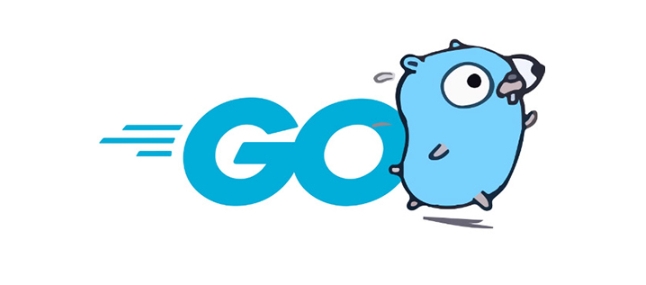Use standard log packages to handle simple scenarios, suitable for small tools or CLI applications; 2. Recommend structured log libraries such as logrus, zap or Go 1.21 slog in the production environment, which support log levels, structured fields and JSON output; 3. Add context to the logs such as request ID, user ID and other information, which can be implemented through middleware; 4. Pay attention to log rotation and management, set appropriate log levels and combine tools to implement file segmentation. The article points out that the Go standard library's log package is suitable for simple needs, but the production environment should use a third-party library that supports structured logs, and emphasizes the importance of adding contextual information to the logs, and recommends that log output be managed reasonably to improve maintainability.

Logging is a critical part of any Go application, especially when debugging issues or monitoring behavior in production. The standard library provides a basic logging package, but for more control and flexibility, you'll often want to go beyond it. Here's how to implement logging effectively in a Go app.

Use the Standard Log Package for Simple Cases
Go's built-in log package is a good starting point if you need basic logging. It's simple and works out of the box.
package main
import (
"log"
)
func main() {
log.Println("Application started")
log.Printf("User %s logged in\n", "john_doe")
} This will print log messages to standard error with a timestamp by default. You can customize the output format using log.SetFlags() and change the output destination with log.SetOutput() .

Use this when:
- You're building a small utility or CLI tool
- You don't need advanced features like log levels
- You want zero dependencies
If you need more features like severity levels, structured logging, or JSON output, you'll need to look elsewhere.

Choose a Structured Logging Library for Production Apps
For real-world applications, especially web services or distributed systems, you'll want structured logging. Libraries like logrus , zap , or slog (Go 1.21 ) are great choices.
These libraries let you:
- Set log levels (debug, info, warning, error)
- Add structured fields to logs (like user IDs or request IDs)
- Output logs in JSON or other machine-readable formats
- Customize formatting and output destinations
Here's an example using logrus :
package main
import (
log "github.com/sirupsen/logrus"
)
func main() {
log.SetLevel(log.DebugLevel)
log.WithFields(log.Fields{
"user": "john_doe",
"role": "admin",
}).Info("User logged in")
log.Debug("This is a debug message")
}This outputs something like:
time="2025-04-05T12:00:00Z" level=info msg="User logged in" user=john_doe role=admin
These logs are easier to parse and analyze in tools like Grafana Loki, Elasticsearch, or Datadog.
Add Context to Logs for Better Debugging
One of the most useful practices in logging is attaching context to each log message. This helps you understand what was happening in the system when an event occurred.
For example, in a web app, you might want to log:
- Request ID
- User ID
- HTTP method and path
- Response status
If you're using a router like chi , you can do this with middleware:
func loggingMiddleware(next http.Handler) http.Handler {
return http.HandlerFunc(func(w http.ResponseWriter, r *http.Request) {
log.WithFields(log.Fields{
"method": r.Method,
"path": r.URL.Path,
}).Info("Request received")
next.ServeHTTP(w, r)
})
}This way, every request gets logged with relevant metadata, making it much easier to trace issues.
Another tip: use a context-aware logger. Some libraries like logrus and zap support attaching fields to a context, so you can carry request-specific data through your app layers.
Don't Forget to Rotate and Manage Logs
Even the best logs aren't helpful if they fill up your disk or become unmanageable. Make sure you:
- Use log rotation (daily or by file size)
- Set appropriate log levels in production (usually
infoorwarn) - Consider writing logs to separate files by severity if needed
You can use external tools like logrotate on Linux or configure your logging library to write to a file directly. For example, with logrus , you can set the output to a file:
f, err := os.OpenFile("app.log", os.O_WRONLY|os.O_CREATE|os.O_APPEND, 0644)
if err != nil {
log.Fatal(err)
}
defer f.Close()
log.SetOutput(f)This is especially useful if you're not using a centralized logging system yet.
That's the core of logging in Go — from basics to structured logging and context. It's not complicated, but getting it right early makes a big difference in maintenance.
The above is the detailed content of How to implement logging in a Go application?. For more information, please follow other related articles on the PHP Chinese website!

Hot AI Tools

Undress AI Tool
Undress images for free

Undresser.AI Undress
AI-powered app for creating realistic nude photos

AI Clothes Remover
Online AI tool for removing clothes from photos.

Clothoff.io
AI clothes remover

Video Face Swap
Swap faces in any video effortlessly with our completely free AI face swap tool!

Hot Article

Hot Tools

Notepad++7.3.1
Easy-to-use and free code editor

SublimeText3 Chinese version
Chinese version, very easy to use

Zend Studio 13.0.1
Powerful PHP integrated development environment

Dreamweaver CS6
Visual web development tools

SublimeText3 Mac version
God-level code editing software (SublimeText3)
 Is golang frontend or backend
Jul 08, 2025 am 01:44 AM
Is golang frontend or backend
Jul 08, 2025 am 01:44 AM
Golang is mainly used for back-end development, but it can also play an indirect role in the front-end field. Its design goals focus on high-performance, concurrent processing and system-level programming, and are suitable for building back-end applications such as API servers, microservices, distributed systems, database operations and CLI tools. Although Golang is not the mainstream language for web front-end, it can be compiled into JavaScript through GopherJS, run on WebAssembly through TinyGo, or generate HTML pages with a template engine to participate in front-end development. However, modern front-end development still needs to rely on JavaScript/TypeScript and its ecosystem. Therefore, Golang is more suitable for the technology stack selection with high-performance backend as the core.
 How to build a GraphQL API in golang
Jul 08, 2025 am 01:03 AM
How to build a GraphQL API in golang
Jul 08, 2025 am 01:03 AM
To build a GraphQLAPI in Go, it is recommended to use the gqlgen library to improve development efficiency. 1. First select the appropriate library, such as gqlgen, which supports automatic code generation based on schema; 2. Then define GraphQLschema, describe the API structure and query portal, such as defining Post types and query methods; 3. Then initialize the project and generate basic code to implement business logic in resolver; 4. Finally, connect GraphQLhandler to HTTPserver and test the API through the built-in Playground. Notes include field naming specifications, error handling, performance optimization and security settings to ensure project maintenance
 How to install Go
Jul 09, 2025 am 02:37 AM
How to install Go
Jul 09, 2025 am 02:37 AM
The key to installing Go is to select the correct version, configure environment variables, and verify the installation. 1. Go to the official website to download the installation package of the corresponding system. Windows uses .msi files, macOS uses .pkg files, Linux uses .tar.gz files and unzip them to /usr/local directory; 2. Configure environment variables, edit ~/.bashrc or ~/.zshrc in Linux/macOS to add PATH and GOPATH, and Windows set PATH to Go in the system properties; 3. Use the government command to verify the installation, and run the test program hello.go to confirm that the compilation and execution are normal. PATH settings and loops throughout the process
 Go sync.WaitGroup example
Jul 09, 2025 am 01:48 AM
Go sync.WaitGroup example
Jul 09, 2025 am 01:48 AM
sync.WaitGroup is used to wait for a group of goroutines to complete the task. Its core is to work together through three methods: Add, Done, and Wait. 1.Add(n) Set the number of goroutines to wait; 2.Done() is called at the end of each goroutine, and the count is reduced by one; 3.Wait() blocks the main coroutine until all tasks are completed. When using it, please note: Add should be called outside the goroutine, avoid duplicate Wait, and be sure to ensure that Don is called. It is recommended to use it with defer. It is common in concurrent crawling of web pages, batch data processing and other scenarios, and can effectively control the concurrency process.
 Go embed package tutorial
Jul 09, 2025 am 02:46 AM
Go embed package tutorial
Jul 09, 2025 am 02:46 AM
Using Go's embed package can easily embed static resources into binary, suitable for web services to package HTML, CSS, pictures and other files. 1. Declare the embedded resource to add //go:embed comment before the variable, such as embedding a single file hello.txt; 2. It can be embedded in the entire directory such as static/*, and realize multi-file packaging through embed.FS; 3. It is recommended to switch the disk loading mode through buildtag or environment variables to improve efficiency; 4. Pay attention to path accuracy, file size limitations and read-only characteristics of embedded resources. Rational use of embed can simplify deployment and optimize project structure.
 Go for Audio/Video Processing
Jul 20, 2025 am 04:14 AM
Go for Audio/Video Processing
Jul 20, 2025 am 04:14 AM
The core of audio and video processing lies in understanding the basic process and optimization methods. 1. The basic process includes acquisition, encoding, transmission, decoding and playback, and each link has technical difficulties; 2. Common problems such as audio and video aberration, lag delay, sound noise, blurred picture, etc. can be solved through synchronous adjustment, coding optimization, noise reduction module, parameter adjustment, etc.; 3. It is recommended to use FFmpeg, OpenCV, WebRTC, GStreamer and other tools to achieve functions; 4. In terms of performance management, we should pay attention to hardware acceleration, reasonable setting of resolution frame rates, control concurrency and memory leakage problems. Mastering these key points will help improve development efficiency and user experience.
 How to build a web server in Go
Jul 15, 2025 am 03:05 AM
How to build a web server in Go
Jul 15, 2025 am 03:05 AM
It is not difficult to build a web server written in Go. The core lies in using the net/http package to implement basic services. 1. Use net/http to start the simplest server: register processing functions and listen to ports through a few lines of code; 2. Routing management: Use ServeMux to organize multiple interface paths for easy structured management; 3. Common practices: group routing by functional modules, and use third-party libraries to support complex matching; 4. Static file service: provide HTML, CSS and JS files through http.FileServer; 5. Performance and security: enable HTTPS, limit the size of the request body, and set timeout to improve security and performance. After mastering these key points, it will be easier to expand functionality.
 Go select with default case
Jul 14, 2025 am 02:54 AM
Go select with default case
Jul 14, 2025 am 02:54 AM
The purpose of select plus default is to allow select to perform default behavior when no other branches are ready to avoid program blocking. 1. When receiving data from the channel without blocking, if the channel is empty, it will directly enter the default branch; 2. In combination with time. After or ticker, try to send data regularly. If the channel is full, it will not block and skip; 3. Prevent deadlocks, avoid program stuck when uncertain whether the channel is closed; when using it, please note that the default branch will be executed immediately and cannot be abused, and default and case are mutually exclusive and will not be executed at the same time.






